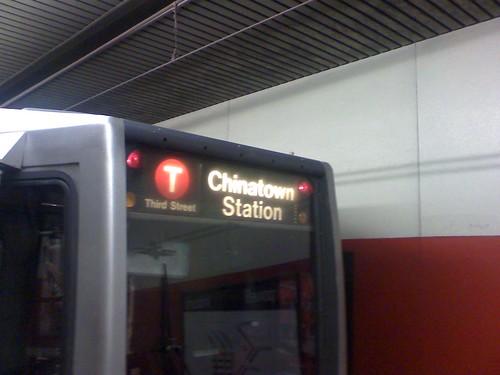Welcome to Akit.Org, home to the Complaint Department and started on February 7, 2002. Featured on: SFist, Curbed SF, SF Citizen, N Judah Chronicles, SF Examiner, SFGate, Rescue Muni, SF Appeal, Pacific Citizen, NBC Bay Area, SF Weekly's The Snitch, Streetsblog SF, and Muni Diaries.
"Akit is the man. He knows Clipper." (spenta)
"It’s a fantastic blog for any San Franciscan." (Kevin)
"Your blog is always on point, and well researched!" (Nina Decker)
"Everyone's favorite volunteer public policy consultant..." (Eve Batey, SF Appeal)
"You are doing a great job keeping on top of Translink stuff. Keep up the good work!" (Greg Dewar, N Judah Chronicles)
"...I don't even bother subscribing anywhere else for my local public transportation info. You have it all..." (Empowered Follower)
"If anyone at City Hall wants to make public transit better for all San Franciscans, it would be wise to follow Akit religiously...
or, better yet, give him a job." (Brock Keeling, SFist)
"It’s a fantastic blog for any San Franciscan." (Kevin)
"Your blog is always on point, and well researched!" (Nina Decker)
"Everyone's favorite volunteer public policy consultant..." (Eve Batey, SF Appeal)
"You are doing a great job keeping on top of Translink stuff. Keep up the good work!" (Greg Dewar, N Judah Chronicles)
"...I don't even bother subscribing anywhere else for my local public transportation info. You have it all..." (Empowered Follower)
"If anyone at City Hall wants to make public transit better for all San Franciscans, it would be wise to follow Akit religiously...
or, better yet, give him a job." (Brock Keeling, SFist)
Monday, December 5, 2011
Hey Muni, Fix Your Destination Signs
Ever ride Muni and sometimes notice your bus or train's destination sign doesn't seem right? I know some of you N-Judah passengers are not that happy when the train operator boots your ass out of the train at 19th and Judah to go back towards downtown when the destination sign says: "Ocean Beach."
On a few occasions, it may be an honest mistake. For example, I ride the 38L-Geary Limited going inbound towards the Transbay Terminal, and the sign accidentally says "48th Avenue,' but we know the bus is really going towards downtown. Even the photo I provided for this blog entry shows just how funny it is to find some Muni operators already using "Chinatown Station" when it won't be ready for another few years.
But as always, you can always laugh at the F-Market's signage: "Nowhere in particular."
Unhelpful and Uncooperative Operators who Refuses to Fix Bad Signage
The primary reason why I'm writing about this is just the bad attitude you get from Muni operators for pointing out the problem. Just yesterday, I was waiting at 14th Avenue and West Portal for the next inbound train. A K-Ingleside/T-Third train arrives and the destination sign says "West Portal."
I asked the operator: "Are you turning back at West Portal? Your sign says "West Portal."" The operator doesn't speak loud enough even though my ear is right next to the opening in the window. I asked him to speak louder and he gives me a snarky remark saying it's going to downtown. I argued that all inbound K/T inbound trains should always say the final destination is: "Sunnydale" and his current signage is misleading. That sure pissed him off as he jammed the accelerator and hit the brakes hard.
I had the same situation happen when I was going towards AT&T Park and the K/T train said: "Embarcadero Station." I had to verbally ask the driver to make sure we are all on the same page.
Do some of those operators realize that when speaking to a passenger through the window, they should at least speak up or at least turn their head and speak towards the passenger if the train is stopped?
Come on Muni, make sure your operators have the correct destination signs at all times.
Subscribe to:
Post Comments (Atom)

1 comment:
I totally agree, headsigns are important. I see wrong headsigns all the time, but the riders don't seem to care.
At least the headsign on the 28 is always right. At Golden Gate Bridge, buses of both directions make the same stops. I always transfer between GGT and 28, and there are thousands of tourists. If the headsign is wrong, everyone would be pissed off.
On AC Transit, if the headsign doesn't work (or showing wrong information), drivers would put a handwritten sign on the windshield. That works out fine.
Let me also share an experience on Tri Delta Transit. On weekends, only 392, 393 and 394 operate. They run every hour. At Pittsburg/Bay Point BART, There was a "392" stopping at the 394 bus stop to pick up passengers. The driver didn't make an announcement, while no riders asked. Everyone thought it's a 392. While the bus was going in the "wrong direction," a rider asked, then the driver said it's a 394. Everyone got on the wrong bus, including myself. I was a casual rider so I could change plans. Everyone else was pissed off, need to wait another hour for the right bus. With low density, walking in Eastern Contra Costa could be painful. Also, most riders pay single fare ($1.75 with no transfers, or $1 with BART transfer, while day pass is just $3), those really need the 392 would need to pay another fare. Both 392 and 394 were supposed to leave BART at a similar time, so no one was aware.
So, "at the terminal, read the bus stop sign, not the headsign." That doesn't make any sense. The driver actually changed the headsign AFTER he left BART. He was supposed to make an announcement, or open the door to pick up passengers AFTER he got the headsign right.
Post a Comment